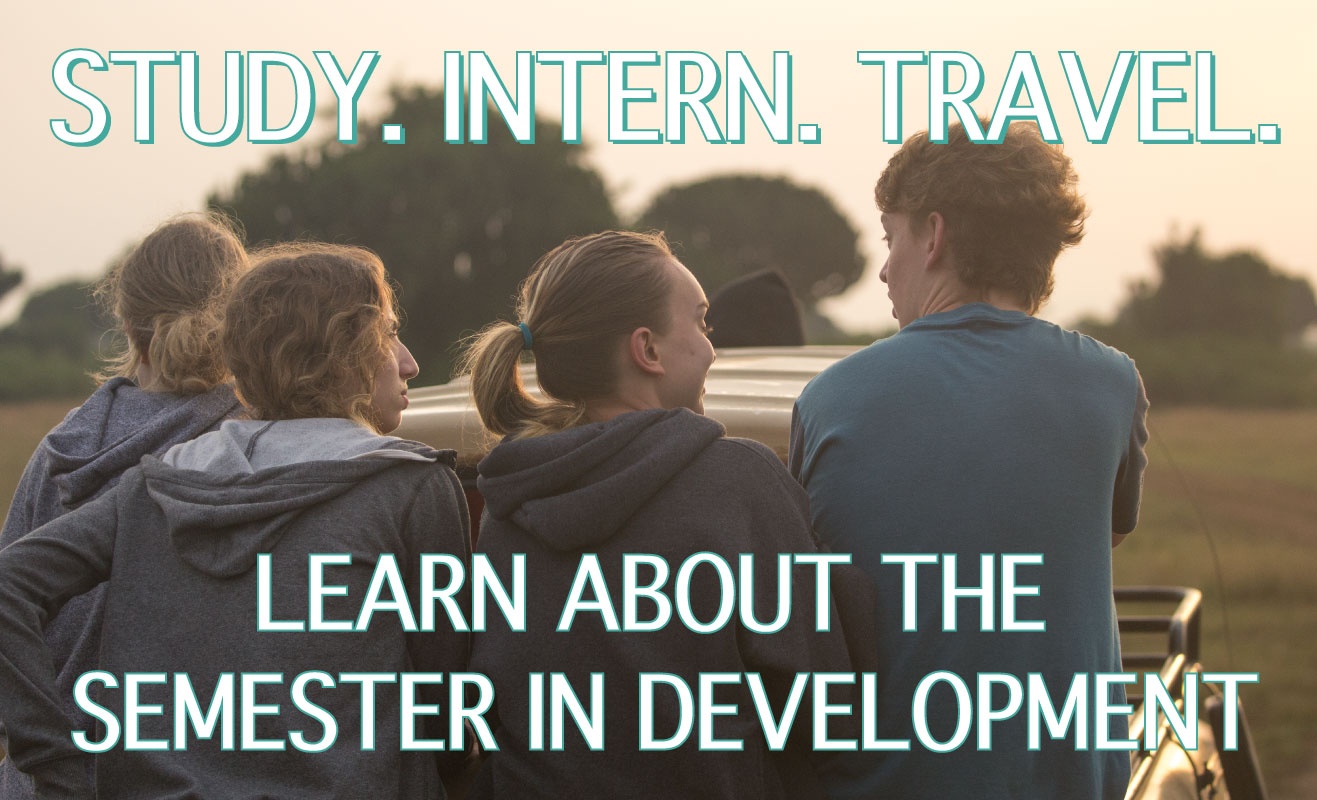Back in 2012, I found myself in rural Uganda, visiting a series of schools in different communities that were coping with a variety of challenges. This was my second stint in Uganda, having previously been in the country researching the arrival of big oil.
This time, I was there checking out different communities, specifically visiting schools and trying to learn more about the gaps between the education sector and the labour market. In a rapidly growing country, with an estimated 35 million people, and an approximate youth unemployment rate of around 82%, Uganda faces some tremendous challenges
One day in particular really stood out to me that summer. I came across a school that had a group of volunteers who’d recently arrived. It was a group of secondary school students who traveled quite a distance, with the desire to do good and help the community. At the time, it was an impressive sight to see. The local administration was particularly pleased by their presence, as they had received a number of things like pencils, paper and books, that they seemed to be in need of.

Back on the road
A few months had passed and I had some free time on my hands, so I clambered back into a matatu and set off back to this community. I was curious to know what, if anything, had changed since I was there. I came across the school I previously visited. I noted that there was a fresh coat of paint on the walls of a variety of the classroom blocks.
I also noted the school seemed significantly busier, children were everywhere. At first I wondered if there was an event that day, or if the school was starting a new term. I found one of the administrators I met on my previous visit, and asked to speak with him.
I started to ask some questions. I particularly focused on why things seemed busier than before. To my surprise, I learned that over the past few weeks, this chaos had become the norm. I mentioned that when I was here previously, it seemed like there were far fewer students, and the administrator confirmed that this was the case.

Okay, so what's going on here?
The administrator replied that the community had recently come to believe that this school could provide the best education for their children. I asked why, assuming something significant shifted. Were there more teachers? No. More classrooms? No. Was the government providing more funding for students? No. Were uniforms now covered, or was the food provided a step above the rest? No, no, and no.
I was told that this shift started to take place once the group of western volunteers had left. I asked specifically what the group did, and how they contributed to the educational opportunities for students at the school. Essentially, it came down to two things: the group had provided some resources (pens, pencils, et cetera) and painted some of the buildings. I didn’t really understand.
So what if a group of volunteers came to your school, donated some resources, and painted some classrooms? I was intrigued by this situation. I asked if there were enough resources now for all of the students. The administrator replied saying over 300 students attended this school and there wasn’t enough for everyone. Okay, so what about the paint, how could that contribute to the overall quality of education?
Unintended Outcomes
I decided to spend some more time in the community to see if I could learn more about what was going on. I found another school nearby and was warmly welcomed. I sat down with an administrator, and I began asking questions about the school. I noticed that this school was far less busy than the one I came from.
So, how many students are enrolled? Approximately 70. Okay, and is that consistent? Well, not entirely, but we make do. What do you mean? There were more students in the past, but things have changed over the last few months. Okay, how have things changed? Many students switched schools, to that one you said you had visited earlier. Okay, do you know why this has happened?
While I only spoke to a handful of people, the sentiment I was getting from what everyone said was that the school I initially visited was considered to be of “higher quality.”
In my conversations with our community members it became more clear as to what had happened. When the volunteers arrived, they had created a “buzz”. They drew attention to the school. Students came home with donated pencils and books, and word of this quickly spread.
The coats of paint, still fresh on most of the classrooms, symbolized a heightened experience, and coveted international support. I had asked the administrator if they were expecting continued support from their visitors. He said he had hoped so, but wasn’t really sure. (In my time in this industry, I’ve come to learn that it’s quite common for volunteer groups to support one project one year, and an entirely different one, even sometimes on a different continent, the next year).
I was told by one of the school’s teachers that many parents, wanting nothing but the best for their children, took their sons and daughters out of other schools, and brought them to this one, thinking they’d be getting a better education.
This school was now overcrowded, chaotic and under-served, while the other I had visited was underwhelming, seemingly empty, and on the decline. Many rooms simply didn’t have enough students to justify running the class, and so teachers were forced to find other means of work to subsidize their already astonishingly low incomes (Uganda is well-known for having one the highest teacher absentee rates in the world, one of the reasons being attributed to low wages).
The good intentions of a school group from the west shifted the landscape of education within this small community. Some teachers were overwhelmed, while others were out of work.
There are a few lessons that can be drawn from this, and many other similar experiences.
Good intentions do not always have good outcomes. If that same school group returned to see what unfolded, would they be so inclined to do the same thing elsewhere? I’d hope not. Surface level initiatives can be disruptive. While seemingly innocent, the painting of some classrooms and the contribution of a few goods, in this case, significantly impacted a community in a number of different ways.
These deeds contributed to, and even created, complex problems. This examples shows the potential perils of voluntourism. There certainly could have been some positive outcomes as well, but those were less apparent.
The important thing here is to always question whether your intended outcomes align with your activities, constantly asking whether or not what you’re doing is going to be net beneficial, and if so, how?
Just because you can do something, doesn’t mean you should. There is this perception in developed countries that because we have money (relative to the Global South), that we can and should do something. Yes, we should be doing something, but when we go abroad for 2 weeks and paint classrooms, we may not achieve the outcomes we assume.
We have this tendency to think that when we go to a developing country that we need to be volunteering, building something, or giving something to someone. Yet, when we travel to a developed country, this would seem a bit off. No one says, "hey let’s go to France and build houses."
The way we perceive others is extremely important, especially in development discourse. Let’s drop the historical patrimony adopted by the North vis-à-vis the South, and consider going somewhere first to learn, before deciding what might be best for the community. Or, perhaps change your spending habits at home or become more politically active, both of which could have far more positive outcomes for communities abroad than a 2 week volunteer trip.
Unless you have enough things to give to everyone, you shouldn’t be giving out anything at all. I learned this lesson on my first (and subsequent last) voluntour trip to Zambia in 2009. I, like so many others, thought I should be bringing things to give to those less fortunate than myself. Once we got to the community where we were staying, I quickly recognized that our group simply did not have enough things to give to everyone, and some community members were going to be left out.
A few months ago, I found myself just outside of Goma in the DR Congo, standing next to a well-intended Belgian woman who was handing out pens to children. Within a matter of moments she was out of pens. Overwhelmed and not really knowing what to do, she turned around and walked away. She had good intentions, but the children were now bickering with each other to get their hands on a pen, a commodity, like so many others, that we take for granted.
Giving things can be done without being disruptive, if you take the time to learn about the community you are giving to. Yet more often than not, this isn’t how it’s done. Assuming that poor people will be better off after you've given them things (such as shirts, pens, et cetera) is not only wrong, it can also be psychologically damaging (and potentially foster dependency), as so many reports have now indicated.
How might you be influencing power dynamics and relationships if you give highly coveted goods to one child and not the other? Of course, handing out pens seems somewhat harmless, but then again so does painting classrooms. On the flip side, if you donate all the pens in the world to a community, all of a sudden the person who sells pens in that community has just lost a vital market.
Lastly, helping solve the worlds problems may look very differently than what you think. One of the many inaccurate assumptions about the developing world is that children don’t have access to education, and that one of the key reasons is because there are not enough schools. To solve this problem, well-intended volunteer groups raise funds, go abroad, and build a school.
After a few weeks, the finishing touches have been put on the new classroom(s), and the group goes home thinking they’ve helped. Yet, without a rigorous monitoring and evaluation plan set up, how can you really be sure that the newly built school is full of students, teachers, and that education is actually improving?
If solving problems were surface level and as easy as building classrooms, development projects would probably be more successful than they’ve been. Instead of going to a country with the intent to do good, why not consider travelling to a developing country with the intent to learn, observe, travel, eat food and meet people (probably the same reasons why you’d travel to a developed country)?
Can we not treat travelling to a developing country the same way we might treat travelling to a developed country? If we did, how would that change our perceptions, and potentially, how we engage with lower income nations?
When we attempt to help without really understanding what we’re doing, we’re contributing to the narrative of “us and them” that so many of us, with good intentions, are trying to deconstruct. Building a school for a community is commendable. Whether or not that leads to improved education for the community is a completely different question.
For more info, check out -
Huffington Post - The Problem With Little White Girls, Boys and Voluntourism
Child Safe - When Children Become Tourist Attractions
The Guardian - You're Better Off Backpacking - VSO Warns About Perils of Voluntourism






Leave A Comment